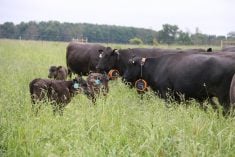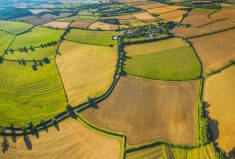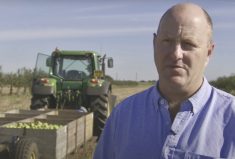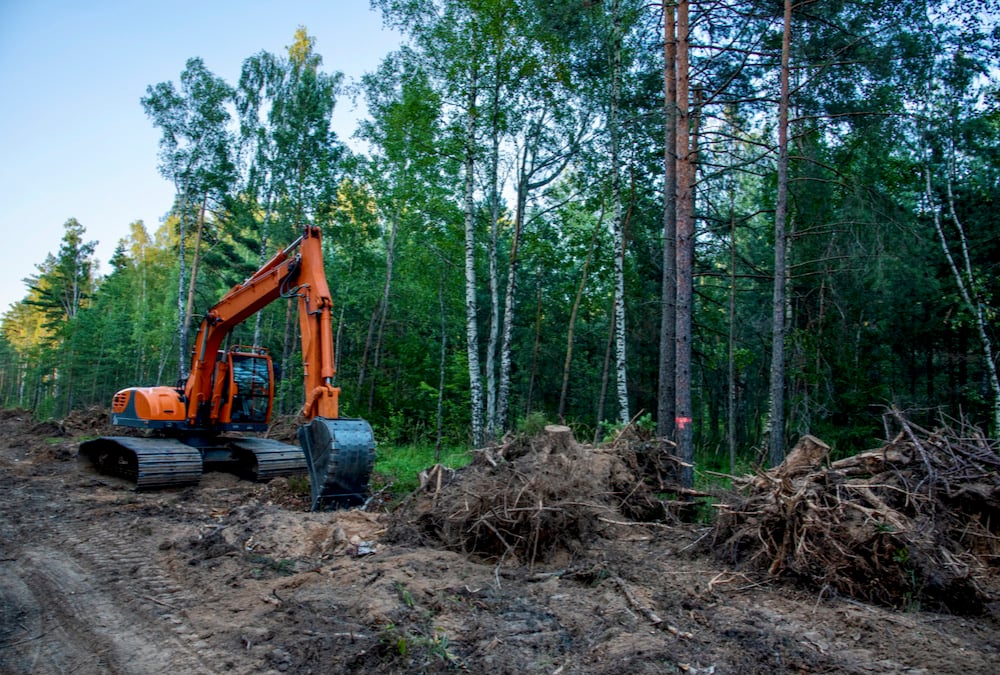It’s best to ease your way into using woodlots to pasture livestock — by working to transform edge-of-field hedgerows or planting trees in marginal areas no longer used for cropping.
For those working to create “silvopasture” the ultimate goal is a diversity of landscapes on the farm that more accurately mimics the natural world.
Steve Gabriel, who wrote a book called Silvopasture, recently spoke to the Ecological Farmers Association of Ontario (EFAO) annual convention. He says silvopasture won’t supply all your pasturing needs even if you successfully establish forage species beneath the trees. “Don’t convert your best pastures to a tree plantation” because those good open pastures are crucial in a well-managed rotational system.
Read Also
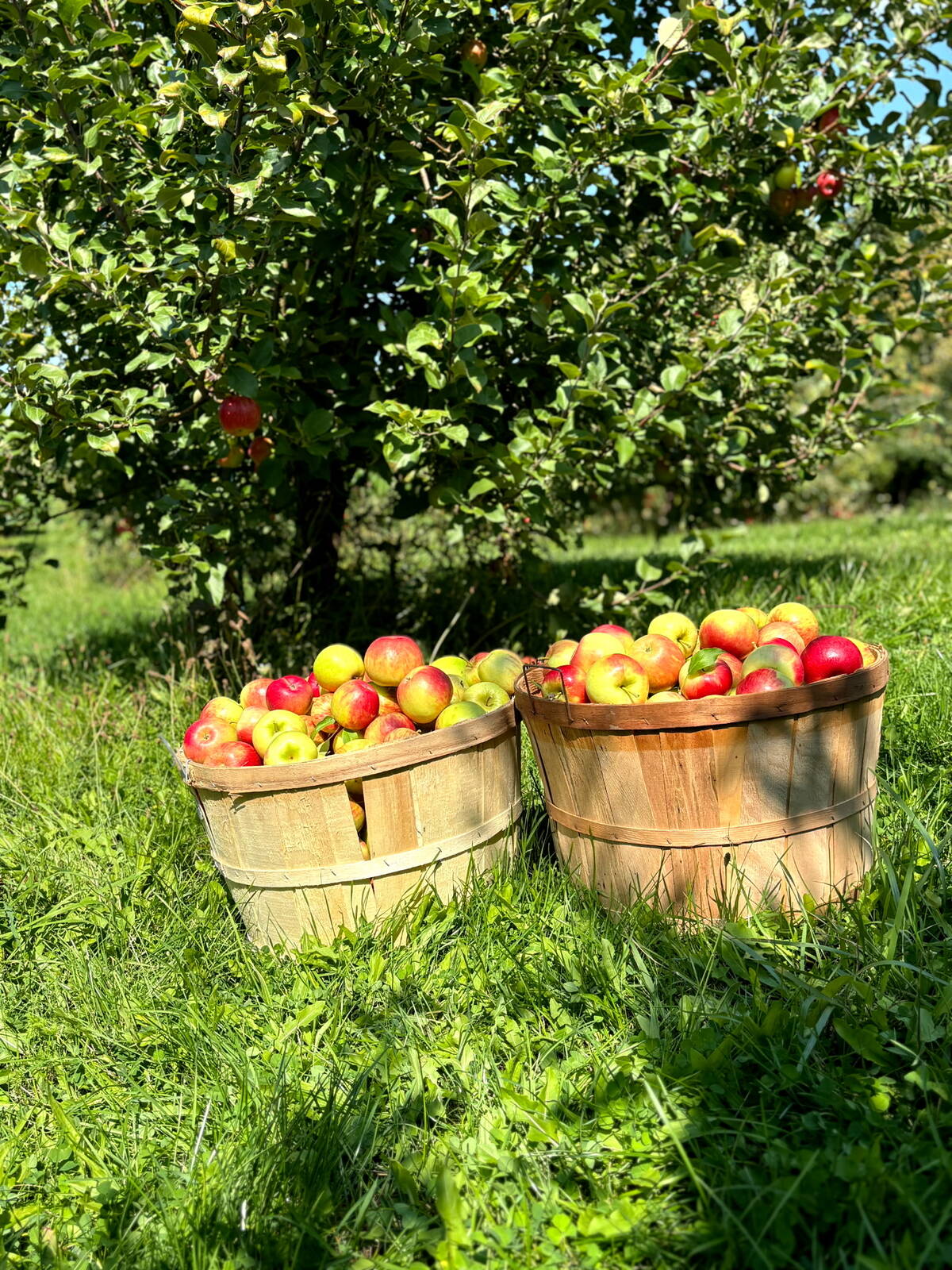
Farmers taking to social media to spread the word about the cost of farm thefts
A rash of farm thefts in Ontario have left farmers looking for new ways to help customers understand the cost of stealing goods.
Why it matters: Silvopasture can increase farmland use by incorporating woodlands for grazing and provides carbon sequestration benefits.
If your farm is fortunate enough to be home to a mature woodlot with mixes of species, ages and sizes of trees, says Gabriel, it most likely should not be pastured even if the expectation is that pasture species could be established and the woodlot fenced off.
Gabriel and his wife run Wellspring Forest Farm near Trumansburg in the Finger Lakes region of New York. Previous management had left behind badly degraded soils in the cropped areas and some poorly regenerating wooded areas. Their goal, when they eventually hand over control of the farm, is for it to be on a path to being a healthy forest — with agricultural production as part of the mix.
“My excitement with silvopasture is to look at the land as an entire organism,” he said.
A movie, Livestock on the Land, produced by Practical Farmers of Iowa was required viewing for convention attendees. It explores the causes of the loss of livestock from much of Iowa’s rural expanse. By telling the stories of farmers working against that trend, it proposes that bringing back animals onto farms can transform the sustainability of the farm businesses, of the natural environment, and of rural communities as a whole.
Gabriel believes silvopasture has this same potential. Ideally decisions about forests, he offered, shouldn’t only be made at a farm scale. They should also be made on a watershed scale because what used to be a forest — even if it doesn’t currently have trees growing on it — covers that entire watershed.
He acknowledges the current system of land ownership makes it very unlikely this will happen. But by making decisions about the stands of the forest on his farm, he’s confident some of those positive impacts will still be possible.
His definition of silvopasture is “ecological restoration of livestock habitat.” And he says he has seen benefits from silvopasture both for the environment and the livestock.
Gabriel says their approximately 50-acre (owned plus leased) farm is representative of a lot of the landscape in the northeastern U.S. — a region where farmers have typically looked to the open fields as the agricultural aspect and only thought occasionally about the wooded areas as a source for selective-logging timber.
Wellspring’s main crop is mushrooms, grown both inside and on inoculated logs in the wooded areas, plus pastured sheep. Ducks were brought in to control grubs in the mushrooms, but also led to a booming duck egg sideline.
Gabriel says there are two ways to move into silvopasture: converting from a woodlot or planting trees in a cleared area. In both cases, it’s best to start slow so you don’t end up with too much work and not enough time to do it.
Traditional managed logging typically leaves a mid-storey layer that will grow into the bigger trees for subsequent harvests. But for silvopasture, this layer blocks light. So a different approach is used to open up the canopy and allow in more light for the cultivated forage species to thrive.
The “stand map” he first drew up for the farm had “old abandoned farm fields that were grown over with a mix of species” and some spots they simply couldn’t access at all because they were grown in too densely. Cutting a path through those areas was “a good, valuable first step.”
He carries flagging tape with him so if he sees a “keeper tree” he’ll flag it. For deciding what to keep and what to remove, Gabriel likes the philosophy imparted to him by a friend of the Seneca nation: “thin as nature would thin.” You don’t take out the best trees because those are the ones that are going to contribute to genetic improvement in the stand. Yet you can still find marketable trees.
This philosophy, he says, generally leaves behind a stand that, to the untrained eye, doesn’t look like it has been harvested at all.
As early as possible, make the area accessible to animals because they can accomplish some of that early work themselves. This fall, the Gabriels are bale-feeding sheep in a woodlot that’s in the early stages of transition to silvopasture. They feed in the morning and the sheep, he says, have the rest of the day “with a lot of extra time on their hooves.” They spend much of it stripping bark off buckthorn and, in the spring, this will be much easier to remove with a forestry mulching machine.
Dealing with the debris is a balancing act. You need to leave some behind for soil health, but you also need accessibility both for the animals and for vehicles used in fencing or other work.
“Make your fence access as wide as your vehicle and your mower,” he advised. If you only cut a narrow fencerow, fencing material continually gets caught during work in the area.
Don’t clear too quickly. Trees that grew in dense bush, if they’re a species with shallow roots like pine or some sugar maple, might not be adapted to high winds. Also, if you’re not ready to establish as much forage as you’re clearing brush, you’re just encouraging unwanted species of undergrowth to re-establish.
Their chosen methods for forage establishment are bale grazing and frost seeding. For the sheep, they drop a bale in a different spot each time to evenly distribute the seeds from the hay and the fertility from the sheep.
For establishing trees in an open area, seedlings are the most common approach. Be aware that, for the first three years this will require lots of your time and resources. “Globally, we’ve been pretty bad at planting trees,” Gabriel said because they’re so often dropped in the ground and left to fend for themselves.
In a wild forest, the chance of a seed eventually turning into a tree is, depending on species, as low as 0.02 per cent. We can vastly improve that seedling’s chances, but it’s important to select good tree stock. Work with a nursery you trust.
If you have a farm with a legacy of a hard, compacted layer at six, eight or 10 inches deep, your success rate with seedlings will suffer. You’ll need to do some soil remediation work first.




